Every metal 3D printing method can print with steel. It’s the most commonly used metal in the world and in 3D printing. But which steel and which 3D printing method is best for your application? Will 3D printed steel parts be as strong and durable as steel parts made by traditional manufacturing methods?
Let’s take a look at how 3D printed steel is revolutionizing manufacturing in dozens of industries from automotive and tooling to aerospace and medical devices. Whether you need replacement parts, mold tooling, fixtures, or anything traditionally made of steel, 3D printing, also called additive manufacturing, can offer a faster, cheaper, and more efficient method.
Strength of 3D Printed Steel
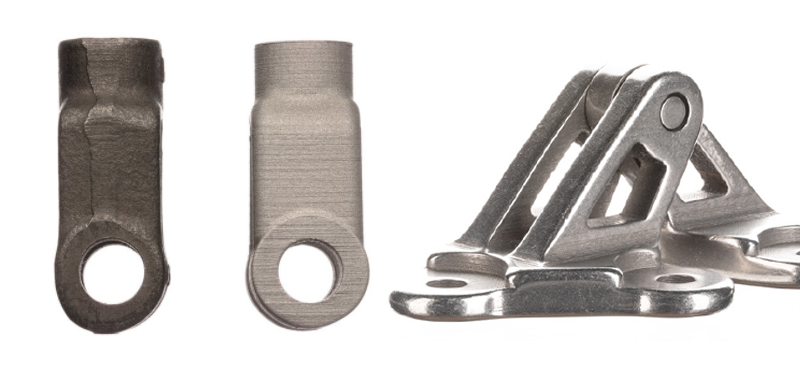
The most common question when it comes to 3D printed steel is: “Is it as strong as forged or cast steel.” The short answer is yes … and no.
3D printed steel parts can be as strong or stronger than steel parts made with traditional manufacturing. This depends on a number of variables including your choice of 3D printing method (there are 10), your end use, the type of steel, post-processing, and part shape. In addition, comparisons depend on which aspect of strength you focus on: tensile strength, strength at static load, high cycle fatigue, etc.
3D printed steel is used for aerospace components, military applications, and in the pedestrian bridge pictured below, so its strength is not in doubt, but let’s look closer.
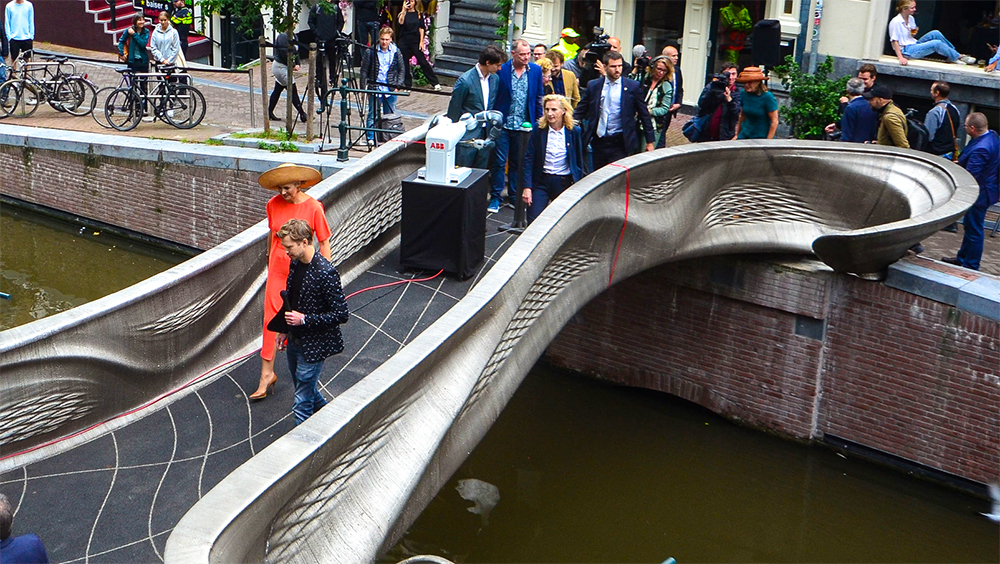
3D printed steel using one technology in particular, laser powder bed fusion (LPBF), has smaller microstructures compared to cast metal components. This gives them higher tensile properties, but cast parts are currently still stronger overall. LPBF steel is most often used to replace cast components, but in unique cases, 3D printed components can replace forgings.
One study showed that under certain conditions stainless steel parts made on LPBF 3D printers were up to three times stronger than stainless steel parts made by conventional techniques. Another recent study showed that stainless steel 3D printed parts exhibited a yield strength (of 1157 MPa) comparable to its wrought counterpart after precipitation-hardening heat-treatment.
In experiments to compare 3D printed steel parts to traditionally manufactured parts, researchers create identical parts with the two methods and test their performance. Apples to apples comparisons of parts, however, only tell half the story.
If you know the particular tensile strength, yield strength, elongation, hardness, or density that your steel parts need, those figures are available from metal 3D printer manufacturers that have put their machines through exhaustive testing.

Advantages of Additive Steel
The main advantage of 3D printed steel is not only its strength, but the unique ability to create parts with internal channels (such as conformal cooling channels in molding tools) and lattice infills, that are impossible to manufacture with traditional methods.
Metal 3D printing can produce parts faster than traditional manufacturing because it is a tool-less method. Manufacturers can also redesign parts to consolidate several components into one 3D printable piece, eliminating the need to assemble or weld, which can introduce weaknesses. Designing a steel part for 3D printing typically means it will require less steel for fabrication and weigh less.
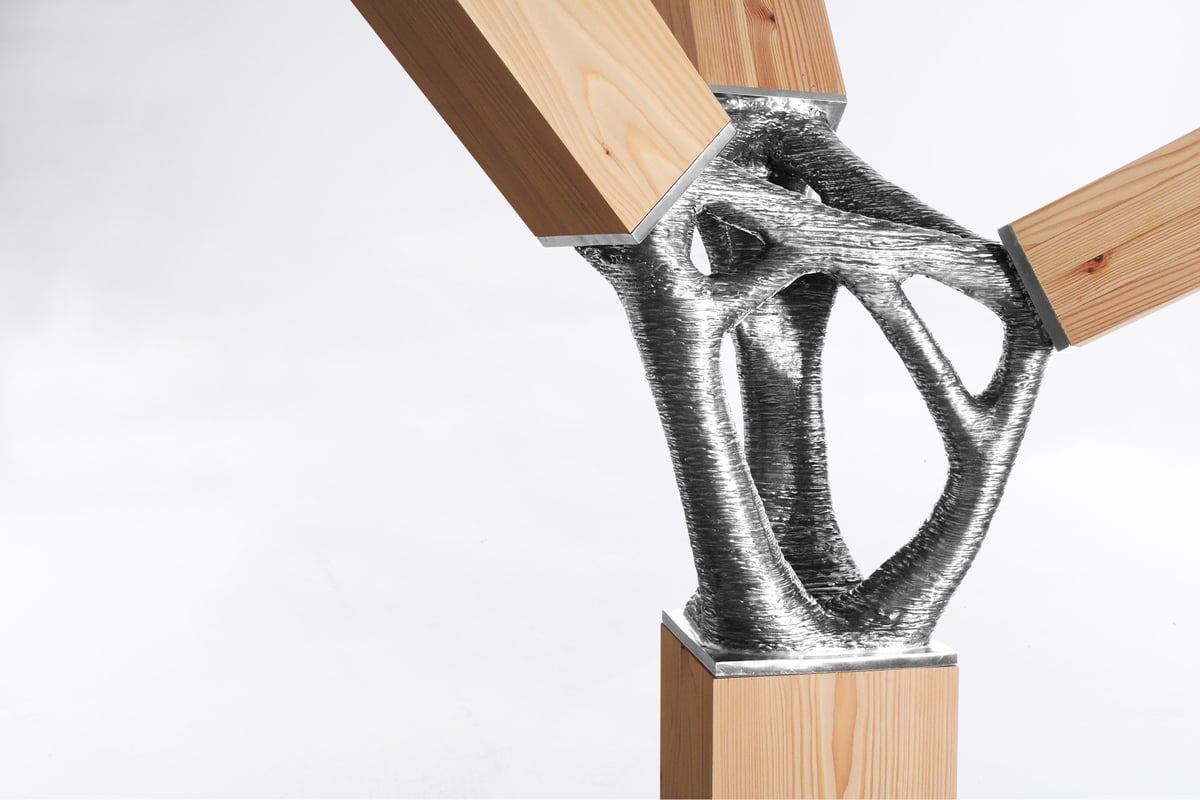
3D printing steel is also a more sustainable and cost-effective practice because it reduces waste. In subtractive manufacturing methods, such as CNC machining, you begin with a block of stainless steel, for example, and remove material producing waste. With additive manufacturing, you only use the material you need for the final part.
3D printing steel is not intended to replace traditional methods in every application, but it can be the better choice for a wide and growing range of uses.
Especially when the parts needed are completely unique and designed with a particular application in mind, such as for rocket or race car engines or in the oil and gas industry, 3D printing is the fastest and most flexible technology to produce iterations and final parts. For military and industrial applications, 3D printed steel is the faster and more efficient way to generate spare parts for vehicles and machinery. 3D printed stainless steel is seeing rapid adoption for medical applications for unique surgical tools and implants.
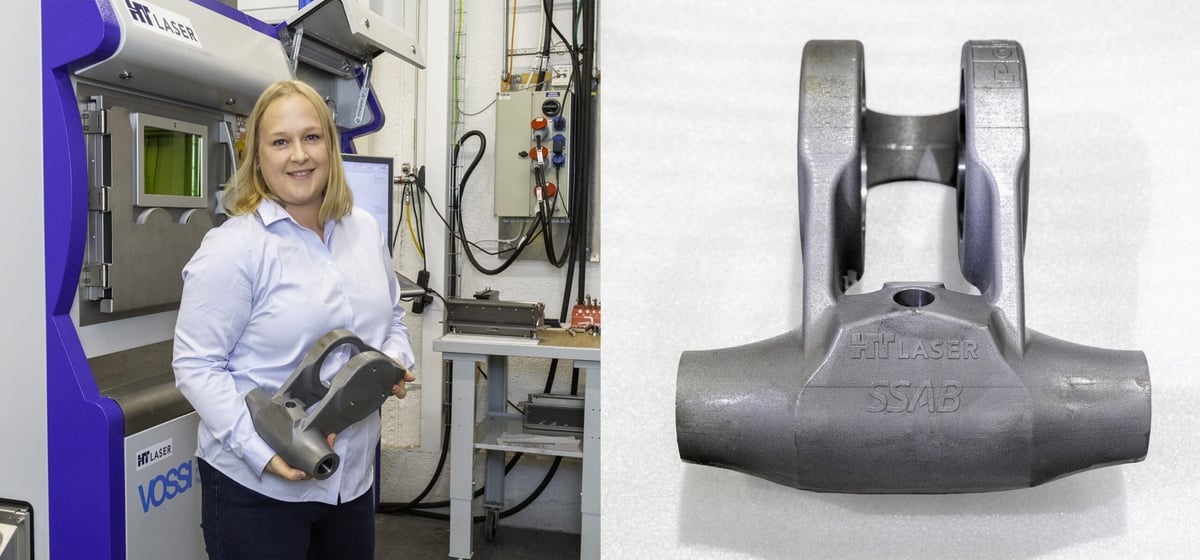
3D Printed Steel Is Used For These Parts:
- Unique or low volume replacement parts
- Molding & forming tools
- Stamping & punch dies
- Nozzles
- Impellers
- Gigs & fixtures
- Heat exchangers
- Surgical instruments
- Cutting tools
Types of Steel in 3D Printing
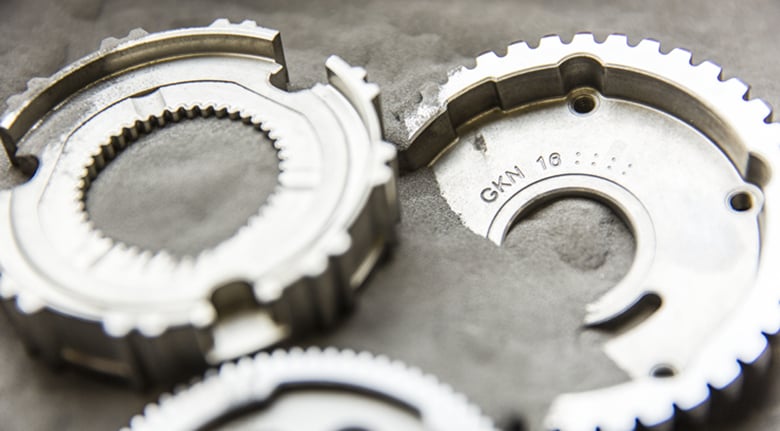
There are thousands of steels and steel alloys with varying mechanical properties used in traditional manufacturing, but in 3D printing there are perhaps a few dozen and some unique to 3D printing. That doesn’t mean the steel for your application isn’t available. Most metal 3D printer makers will work with you to qualify your particular steel to be 3D printed.
Among your steel options are:
- Stainless Steels (316L, 304L , 17-4 PH, 15-5PH, 420, 254, PH1, GP1, 630, 410)
- Tool Steels (D2, M2, H13, H11, MS1, 1.2709)
- Low Alloy Steels (4140)
- Case Hardening Steel (20MnCr5)
More recently, steel alloys unique to 3D printing have emerged aimed at solving problems inherent with traditionally manufactured steel parts.
For example, 3D printer maker Desktop Metal launched a proprietary stainless steel in 2022 that it says, combines the tensile strength, ductility, and corrosion resistance of 13-8 PH stainless steel with the hardness of low-alloy steels, such as 4140. The company says customers can go to market with parts in this material and skip the plating step required for traditionally manufactured parts.
The company also offers two custom steel-bronze blends it says enables 3D printed steel parts to have enhanced corrosion resistance properties while being easy to machine and polish.
Although most metal powder used in 3D printing is the same used in other manufacturing methods, additive manufacturing-specific metal powders are on the rise as more companies turn to the technology. Some metal powder manufacturers, such as GKN, also custom produce powder for sensitive 3D printing applicants.
How to 3D Print Steel
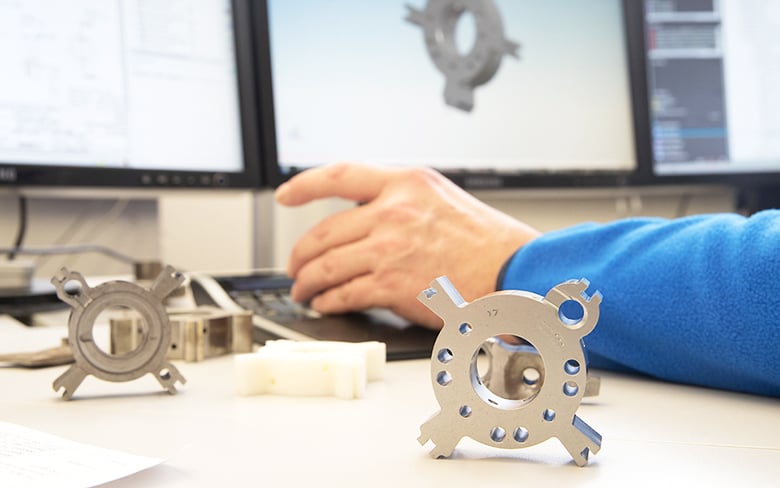
The strength, properties, and application of 3D printed steel depend largely on which 3D printing technology you use. Certain methods produce stronger 3D printed steel parts, other methods produce better hardness or abrasion resistance, and some technologies are just very fast.
Below you see the major metal 3D printing methods, their properties, and a few examples of common applications. There are, in fact, about 10 ways to 3D print steel and you can find all of them in the article linked below.
Fused Deposition Modeling (FDM)
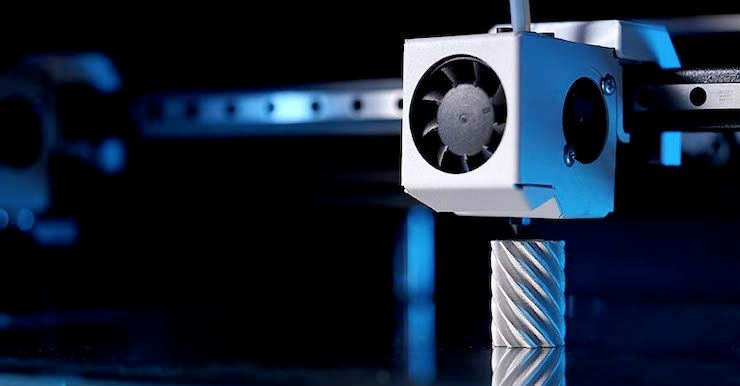
Fused deposition modeling (FDM) is a newcomer to metal 3D printing but quickly growing as more printer manufacturers certify metal filament for use on their printers. FDM is still far more popular for plastics, but new plastic filaments infused with stainless steel powder can produce solid metal parts more affordably that any other method.
Material makers, such as BASF Forward AM and The Virtual Foundry, offer metal filaments that can be used on essentially any FDM printer provided it has a hardened steel nozzle to handle the abrasive filament and can reach the required extrusion temperature. More recently, FDM printer makers, such as, UltiMaker, BCN3D, and Zortrax, have begun offering kits with everything needed to get started printing with metal filament.
These filaments consist of a mixture of about 80% metal and 20% plastic. After printing, post-processing removes the plastic, resulting in nearly 100% metal parts similar to metal injection molding.
Filament is not your only material choice for FDM printing. A few companies, such as Pollen AM offer FDM 3D printers that use metal in pellet or granule form. These are exactly the same as existing metal injection moulding feedstocks.
Because of the removal of plastic material in post-processing, FDM metal parts will shrink. The amount of shrinkage is generally consistent and can be factored into CAD or slicing software to still allow for high-precision finished parts.
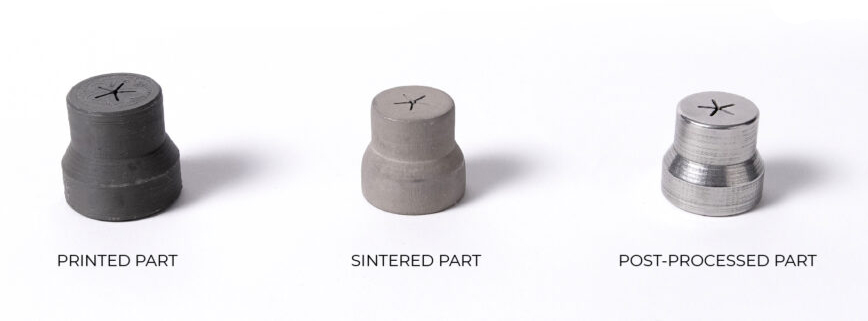
Even though 3D printing with metal filament may not be suitable for applications with stringent strength requirements (i.e. aerospace), the economic factors of producing dense metal non-critical components on an affordable FDM machine can outweigh their incompatibility for some high-stress applications.
Ideal use cases for this technology are metal replacement parts, prototype parts, and end-use parts that won’t be subject to extreme stress.
Bound Metal Deposition (BMD)
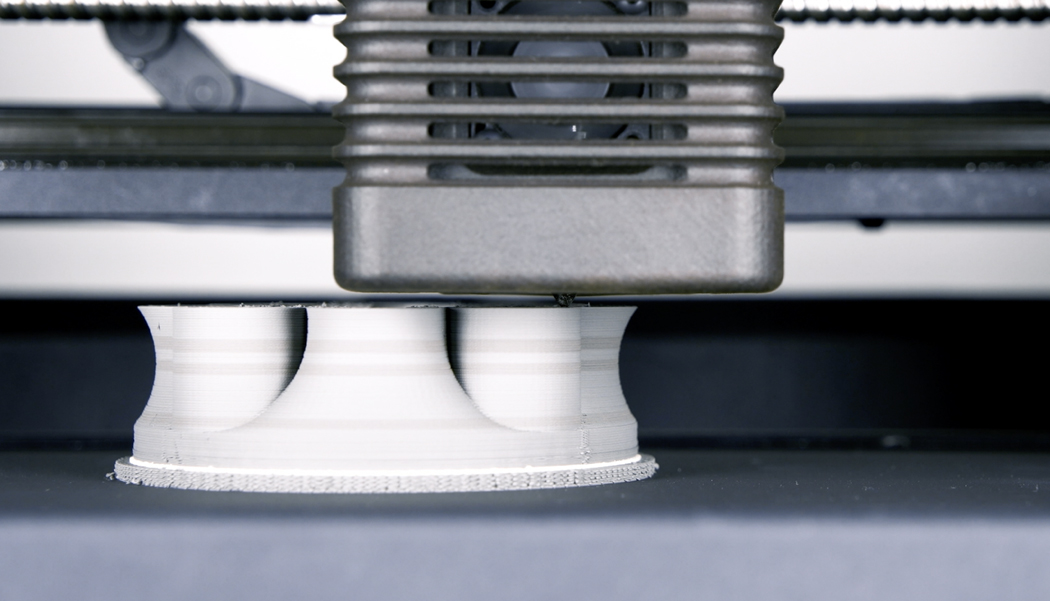
Similar to FDM and also in the extrusion technology category, bound metal deposition (BMD) is a 3D printing processes that begins with bound metal rods comprised of a higher percentage of metal powder than the filament used with FDM. It requires post-processing to remove the binder and heat treatment in a furnace for the final sintering.
There are only a handful of 3D printers that use this method, such as those from Desktop Metal, and Markforged, but more are entering this market, so stay tuned. Prized as being office-friendly metal 3D printing solutions, they are more expensive then most FDM printers, but less expensive then the powder-based metal 3D printing technologies below.
These printers use proprietary metal rod material, but when it comes to steel, you’re in luck. Both Desktop Metal and Markforged offers four types of steel.
Ideal use cases for this technology are steel prototype parts where you need to fully test the functionality before the part is mass produced with traditional metal manufacturing methods. Popular applications include forming tools, stamping and punch dies, nozzles, impellers, fixtures, and heat exchangers.
For example, the company Shukla Medical, uses the Metal X printer by Markforged to print steel prototypes of its orthopedic implant removal tools.
Laser Powder Bed Fusion
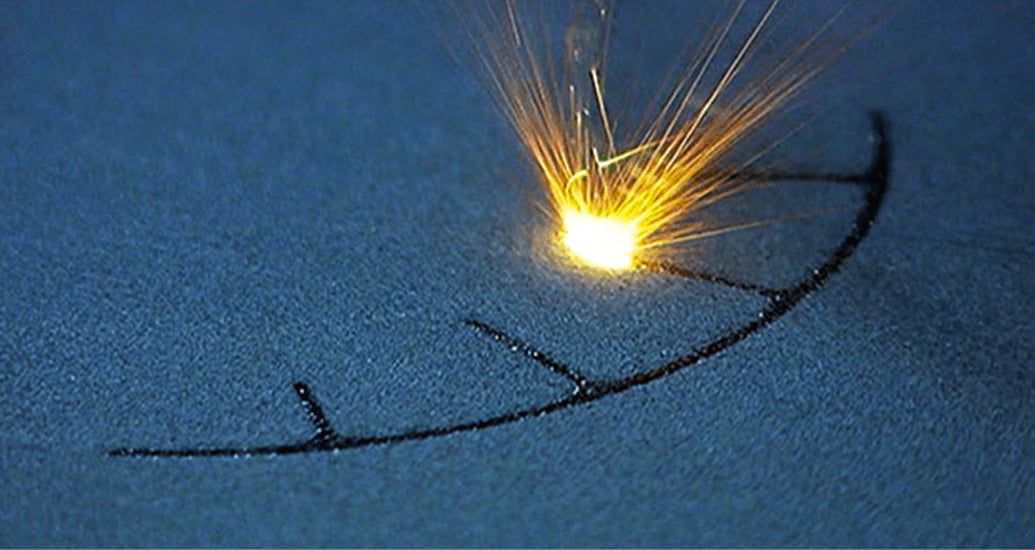
Laser powder bed fusion (LPBF) also know as selective laser melting (SLM) is the most common type of metal 3D printing accounting for 80% of the metal 3D printers on the market.
The method uses high-powered lasers to selectively melt metal powder layer by layer. The melted parts fuse together on a molecular basis until the homogenous model is complete.
LPBF 3D printers come in a wide range of sizes, prices, and laser strengths. These variables and others effect the final part properties, print speed, volume, and other features of steel parts.
Steel and steel alloys are the most popular material for LPBF machines and, unlike FDM and BMD, metal powders are widely commercially available because they are most often the same ones used in traditional manufacturing methods.
LPBF is the technology that brings out the most in 3D printed steel. Applications include aerospace components, such as monolithic thrust chambers, rocket engine components, and heat exchangers; molds, tools and general metalworking applications; plus high-wear components and surgical instruments.
An up-and-coming method for 3D printing stainless and tool steel called Cold Metal Fusion uses a proprietary feedstock on selective laser sintering (SLS) 3D printers. These machines typically sinter polymer powder into final 3D shapes, but a novel feedstock from a company called Headmade Materials enables these machines from select makers, such as Farsoon and Nexa3D, to process metal. The feedstock is a metal powder where each particle is encased in a polymer binder. The resulting parts are then post processed just like metal injection molded parts, which is a similar process to the FDM 3D printed parts above.
Binder Jetting
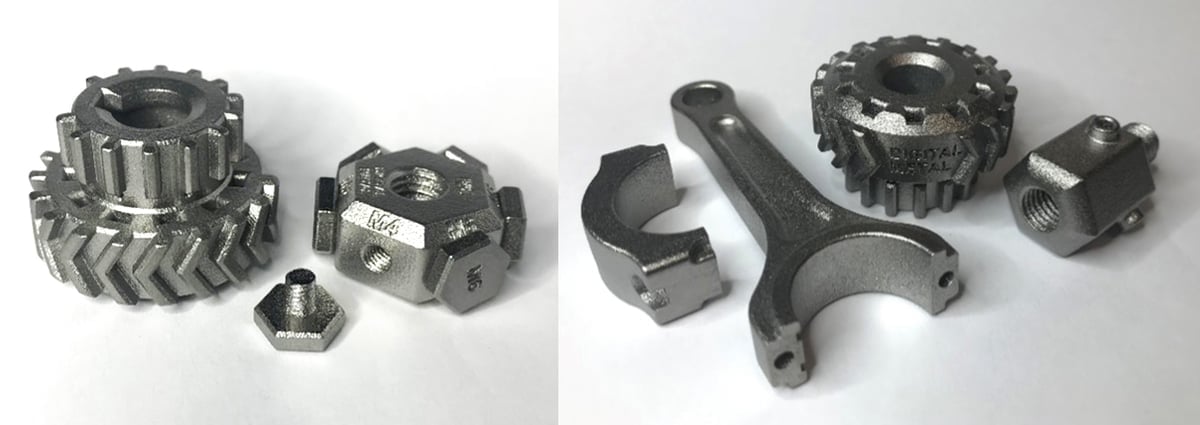
Binder jetting is a method that bonds layers of metal powders by using a liquid binding agent instead of lasers. The binder is removed in post-processing.
Binder jetting is known for its speed and throughput when compared with other 3D printing methods or traditional manufacturing. Metal binder jet parts have material properties equivalent to parts produced with metal injection molding.
The number of manufacturers producing metal binder jetting 3D printers is much smaller than those making LPBF machines. The top manufacturers are Desktop Metal, HP, and Markforged, while GE Additive is set to launch a solution soon.
Ideal applications for metal binder jetting with steel include mid- to high-volume production of metal tools and spare parts.
In fact, HP says its Metal Jet 3D printer was designed explicitly for the mass production of metals like stainless steel 316L. HP is partnering with Parmatech to produce steel parts for the medical industry.
Electron Beam Melting (EBM)
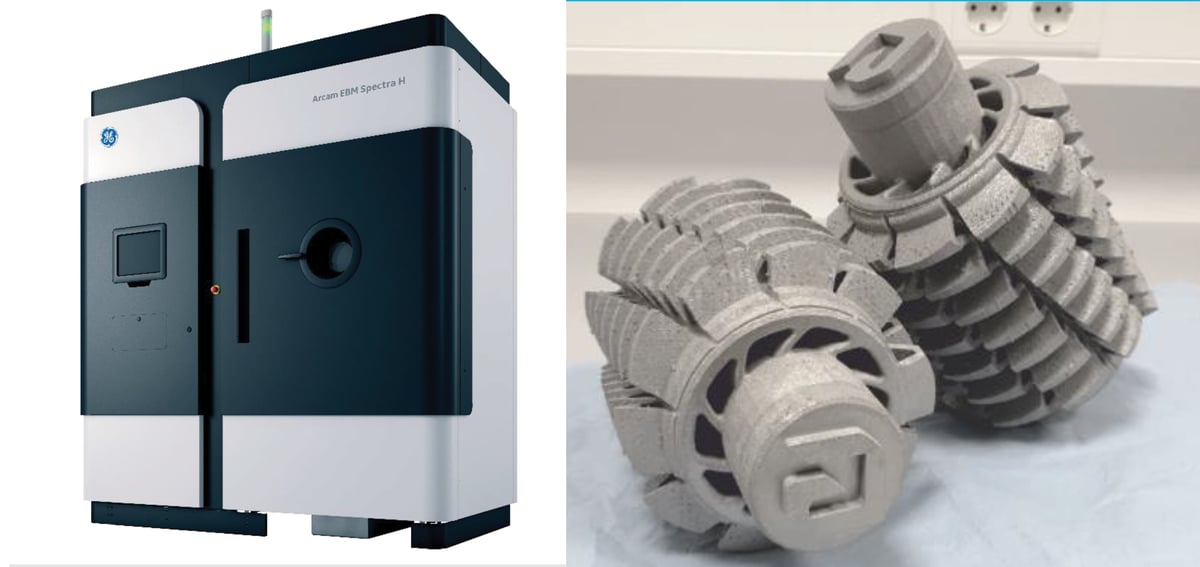
Electron beam melting (EBM) is yet another powder bed fusion technology. It works similarly to laser powder bed fusion (LPBF) except that it uses a much hotter electron beam as an energy source instead of a laser.
A re-coater moves a layer of powder over the build plate, while an electron beam selectively melts each cross section of the powder. After each layer is printed, the build plate lowers and another layer of power is rolled on top of the last.
EBM can be much faster than SLM, but SLM produces smoother, and slightly more accurate parts. The electron beam is wider than a laser beam, so EBM may produce a less precise part than SLM. Another difference is that the build takes place in a vacuum chamber that reduces any material impurities that can lead to defects. This is why EBM is often the method of choice to print components for aerospace, automotive, defense, petrochemical, and medical implants.
Because of the beam’s nature, material choice is limited to conductive metals and alloys, most prominently titanium, aluminum, copper, nickel, but also steel. GE Additive’s Arcam EBM Spectra H, for example, can process what the company called Highly Alloyed Cold Work Tool steel.
Cold Spray
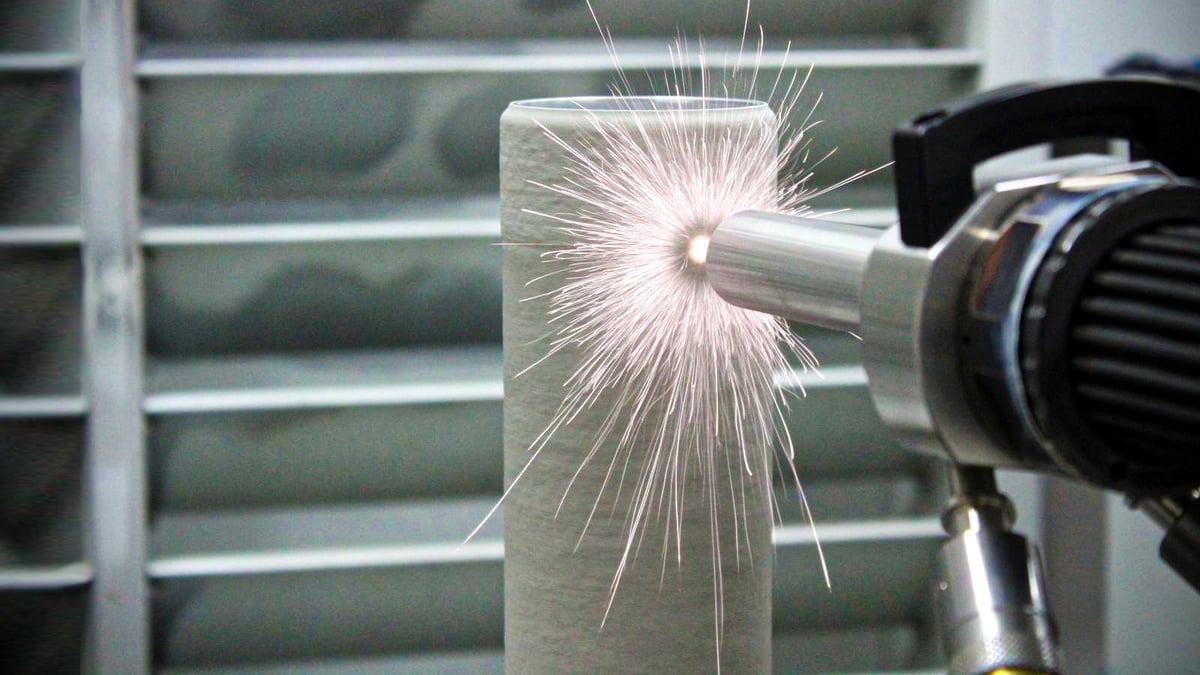
Cold spray 3D printing works by injecting metal powders through a rocket nozzle into a supersonic stream of pressurized gases like air, nitrogen, or helium. The process is called “cold” because the metal particles do not melt, but rather impact upon and stick to a metal substrate in a process known as plastic deformation.
Cold spray printed materials are not susceptible to porosity, hot-cracking, or other problems common to melt-based technologies. The method offers several advantages over other manufacturing methods. It doesn’t require post-processing, and it generally has a small carbon footprint due to its combination of efficient additive technology and on-location usability. For these reasons, it is used in military and aerospace repair applications the world over.
For example, the US Army uses cold spray to repair mounts for its worn steel Bradley 25-mm turret gun.
In an automotive application, cold spraying steel is being explored for collision repairs since high strength steel substrates in vehicles can be sensitive to heat-based repairs like welding.
Direct Energy Deposition (DED) & Wire Arc Additive Manufacturing (WAAM)
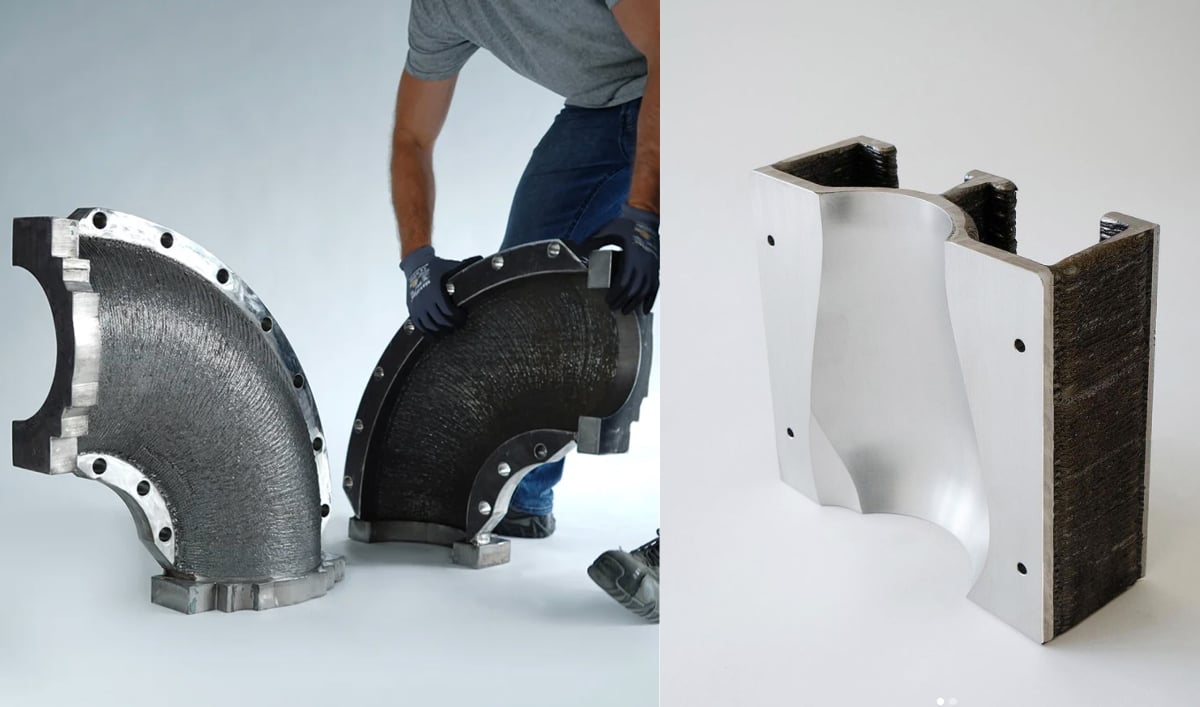
Direct energy deposition (DED) takes blown powder or welding wire, feeds it through a nozzle, and introduces a power source to melt the metal. A melt pool is created and then applied to the build substrate. DED is an updated process related to the old construction technique known as “cladding,” in which a coating is added to a material structure, often for thermal insulation or weather resistance. DED is useful for large size objects in general, and also for complex geometries requiring extensive machining – DED can get those parts much closer to ready than traditional CNC machining.
Because DED uses the cladding process, it can be used to add complex geometries to existing steel parts, thereby combining complexity with reduced cost. For example, French company AddUp advertises a rocket nozzle utilizing a pre-spun large hopper cone made with 304 stainless steel, on which it printed an isogrid structure normally machined out of a larger part using traditional methods.
A technology related to DED is wire arc additive manufacturing (WAAM). Rather than using powder, WAAM uses metal wire, melting it with an electric arc. The process is controlled by robotic arms. WAAM is also capable of producing large-scale metal parts, dramatically illustrated by the Dutch company MX3D and its 41-foot, nine thousand pound stainless steel bridge in Amsterdam and a repair component for an oil and gas application, proving that parts can be manufactured in the field.
Micro 3D printing, Metal Resins & More
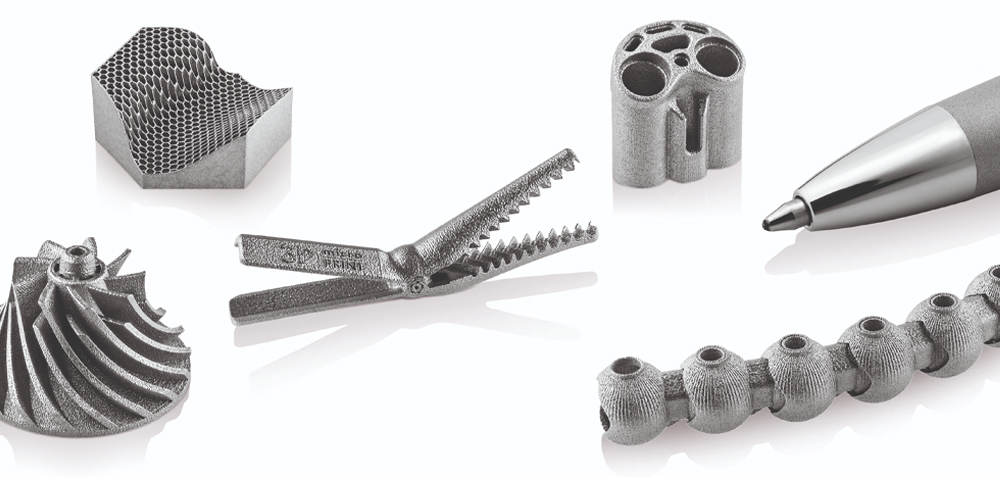
Less common but growing in popularity are a few specialized steel 3D printing methods that have very specific applications or very specific benefits.
Additive manufacturing on the microscale, or micro 3D printing, enables printing parts at the resolution of a few microns (or less). There are three micro 3D printing methods capable of producing metal parts.
Electrochemical deposition is a cutting-edge micro metal 3D printing process developed by Swiss company Exaddon. In this process, a printing nozzle delivers liquid infused with metal ions, building parts at the atomic level.
Another micro metal 3D printing method is micro selective laser sintering, in which a layer of metal nanoparticle ink is coated onto a substrate then dried to produce a uniform nanoparticle layer. Next, laser light that has been patterned using a digital micromirror array is used to heat and sinter the nanoparticles into the desired patterns. This set of steps is then repeated to build up each layer of the 3D part in the μSLS system.
Researchers in Germany successfully tested micro SLS printing of hollow microneedles using 316L stainless steel.
The third method for micro metal 3D printing can also be used for non-micro parts. LMM (lithography-based metal manufacturing) is a stereolithography or light-based technology. It uses the principle of photopolymerization, where metal powder is homogeneously dispersed in a light-sensitive resin called slurry then selectively polymerized, layer by layer, by exposure with light.
Post processing is required to remove the polymer from the part and sinter it to a near-solid metal component. The technology, found in 3D printers by Admatec and Incus among others, results in high resolutions and very fine surface roughness in printed products.
Lead image parts by 3D Systems, Desktop Metal, MX3D, and Materalise.

License: The text of "3D Printing Steel – The Ultimate Guide" by All3DP Pro is licensed under a Creative Commons Attribution 4.0 International License.










